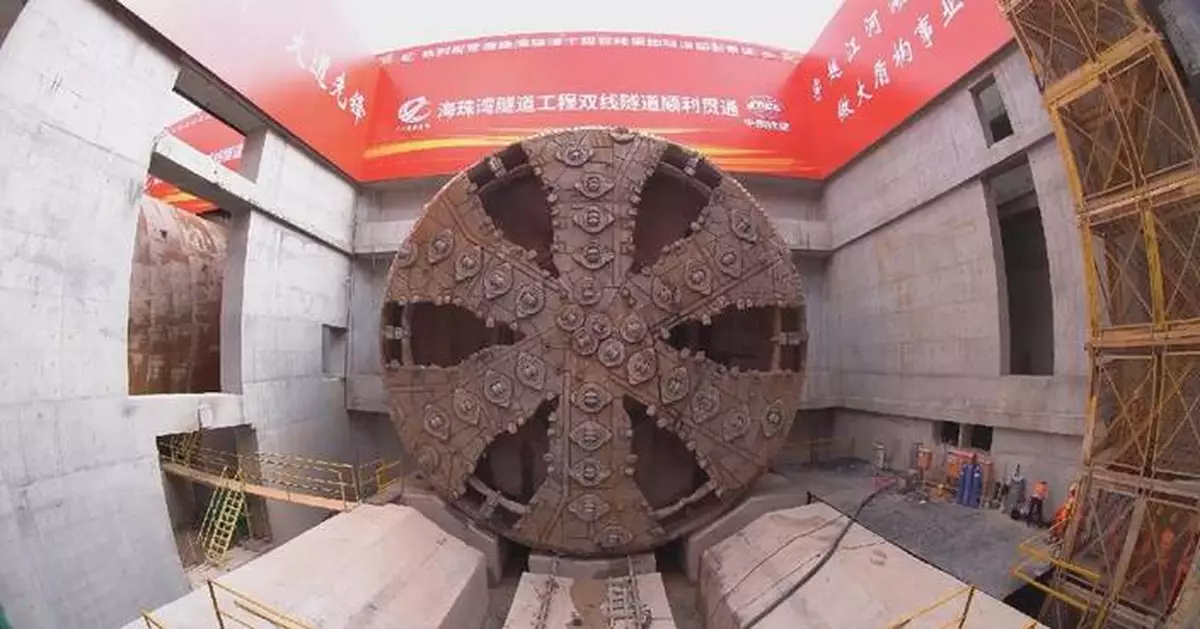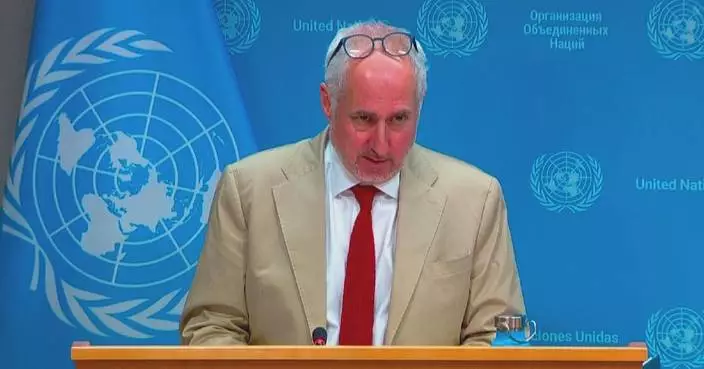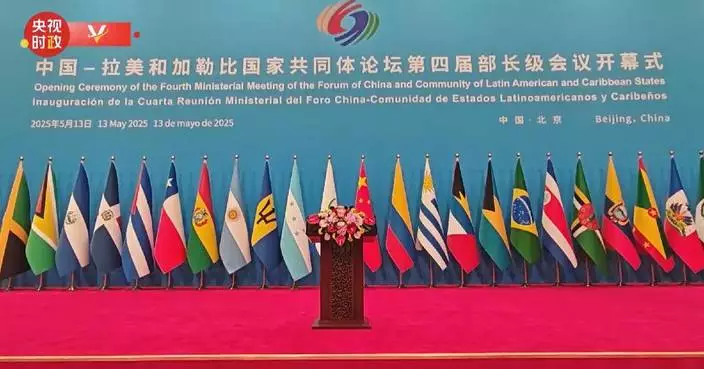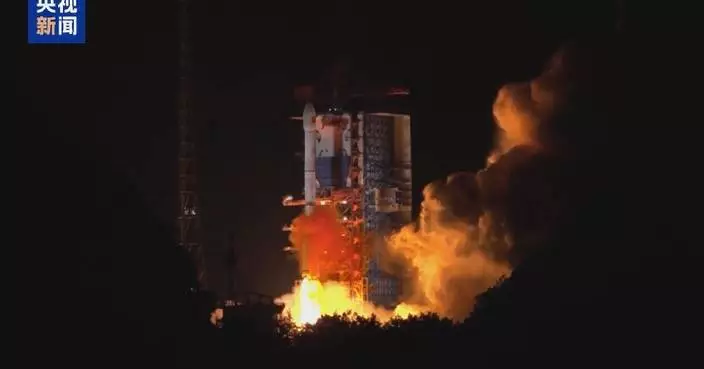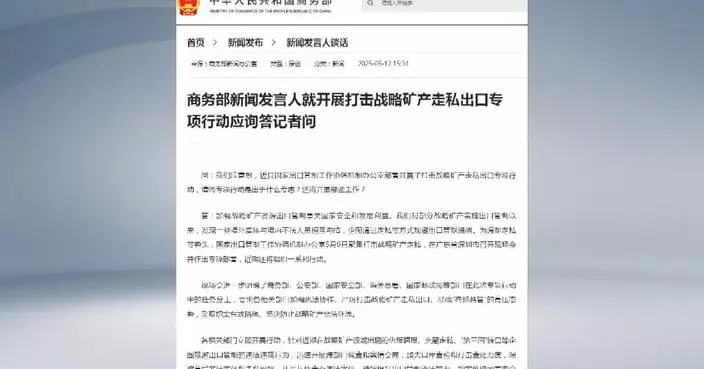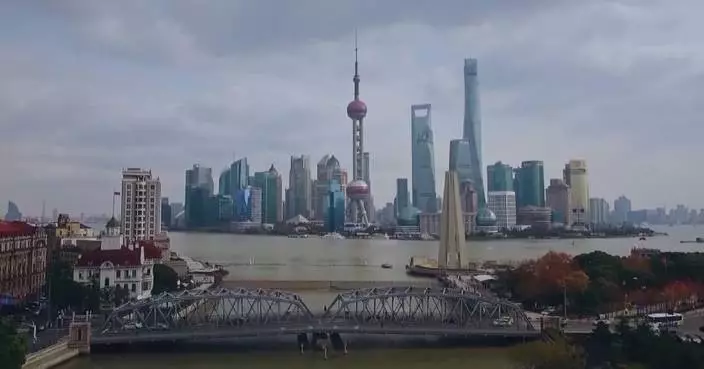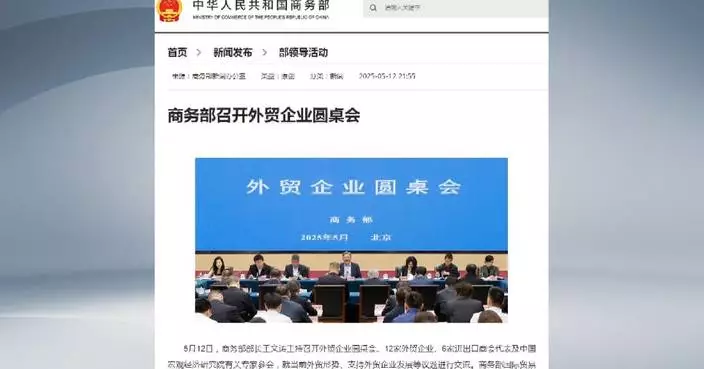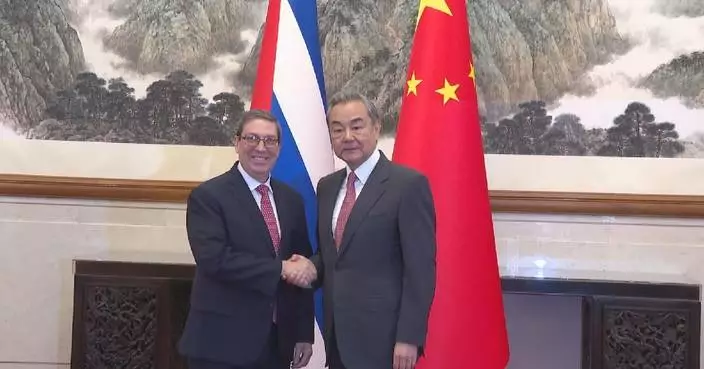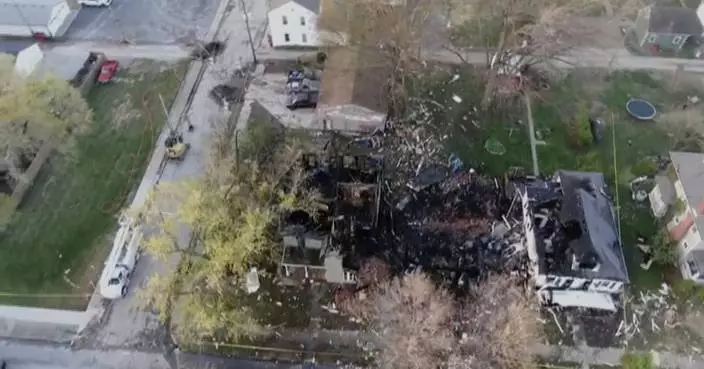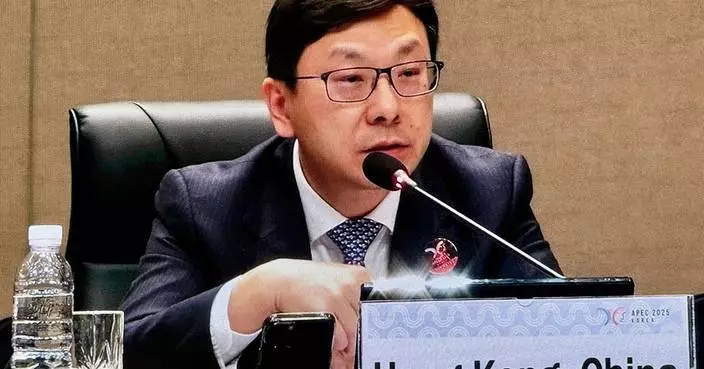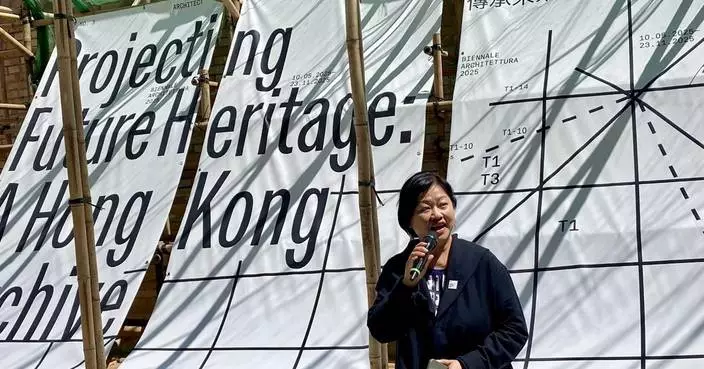The Haizhu Bay Tunnel, the first super-large-diameter shield tunnel in the Pearl River Basin, was finally drilled through in Guangzhou, south China's Guangdong Province, on Monday, marking new progress in its construction.
The total length of the two-way six-lane tunnel, a provincial and municipal double key project, is 4.35 kilometers. The shield section is 2,077 meters long, and the excavation diameter is 15.07 meters, while the outer diameter of the segment is 14.5 meters.
"The Haizhu Bay Tunnel is the most crucial control project of the Guangzhou South Railway Station's rapid transit system. It is also the first project in Guangzhou to utilize a super-large-diameter shield tunnel to cross the Pearl River system. Today, the smooth operation of the boring machine used for constructing the west tunnel marks the achievement of the drill-through of two tunnels of the key project in Guangdong Province," said Wang Haijun, general manager of the project.
Upon its completion and inauguration in 2025, it will form an express channel between Guangzhou's city center and Guangzhou South Railway Station, cutting the travel time between them to 15 minutes, and further improve the infrastructure level of the Guangdong-Hong Kong-Macao Greater Bay Area.
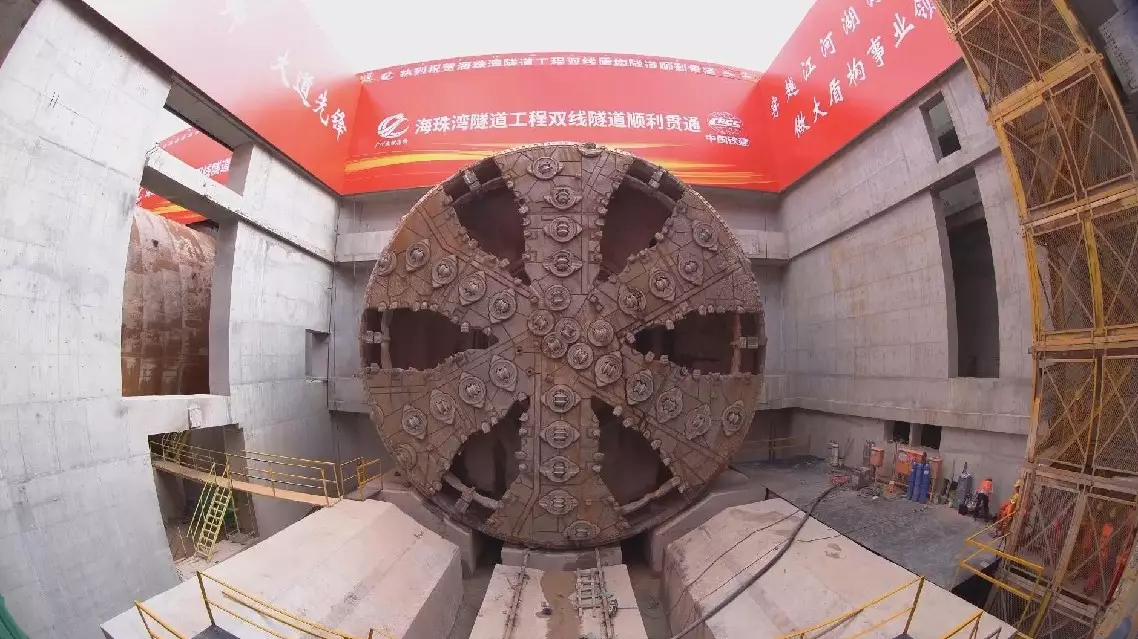
Ultra-large-diameter tunnel drilled through in Guangdong
Chilean President Gabriel Boric arrived in Beijing on Monday evening for the fourth ministerial meeting of the China-CELAC (Community of Latin American and Caribbean States) Forum, which is set to open on Tuesday.
Chile established diplomatic relations with the People's Republic of China in 1970. It was the first South American country to establish diplomatic relations with the People's Republic of China and also the first Latin American country to sign a bilateral agreement with the country on China's accession to the World Trade Organization and the first to recognize China's full market economy status.
Last November, Chinese President Xi Jinping met with Boric on the sidelines of the 31st APEC Economic Leaders' Meeting in Lima.
Speaking at that meeting, Xi noted that China is ready to work with Chile to take the 55th anniversary of the establishment of diplomatic relations between the two countries as an opportunity to strengthen strategic communication, deepen mutually beneficial cooperation, share development opportunities, and promote new and greater development in the comprehensive strategic partnership between the two sides.
Also speaking at that meeting, Boric expressed Chile's welcome for more Chinese enterprises to carry out cooperation with Chile in areas such as production capacity and infrastructure, and Chile's willingness to provide a favorable business environment for Chinese companies. Chile looks forward to close communication with China within multilateral frameworks, jointly opposing protectionism, and safeguarding global free trade as well as safe and smooth industrial and supply chains, he said.

Chilean president arrives in Beijing for 4th ministerial meeting of China-CELAC Forum



